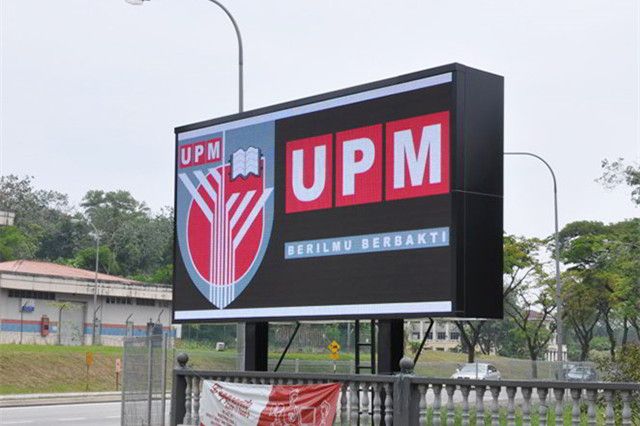産業ニュース
LEDディスプレイ画面の使用時の放熱の問題
The LED display screen, which combines numerous advantages, is like a fish in water in the market. Walking on the streets, there are eye-catching LED display screen products everywhere. 我々はすべてそれを知っている LED広告ディスプレイ screens are afraid of heat and water, and the impact of heat on the performance of LED display screens is fatal, directly affecting the stability of the display screen during use and the lifespan of the display screen. 故に, in order to reduce the impact of heat on the display screen, we need to understand the heat dissipation characteristics of the display screen, and then make a reasonable heat dissipation design for the display screen.
Poor heat dissipation can have some adverse effects on LED display screens, such as affecting the lifespan of the screen body. Prolonged exposure to high temperatures may lead to faster LED attenuation, resulting in the screen body not reaching its designed lifespan; Long term use can cause screen distortion: Poor or uneven heat dissipation may lead to uneven heat dissipation in various parts of the LED light, while the uneven attenuation speed of the red, 緑, and blue LED lights is more likely to cause color deviation on the screen body. The uneven brightness of the LED lights in various parts will definitely cause screen distortion on site.
To solve the heat dissipation problem of LED screens during use, we can start from the following aspects:
1. Fan cooling method: The interior of the lamp housing is reinforced with a long-life and high-efficiency fan for heat dissipation, which is low-cost and effective. しかしながら, replacing the fan is troublesome and not suitable for outdoor use, and this design is relatively rare.
2. Surface radiation heat dissipation treatment method: The surface of the lamp shell is subjected to radiation heat dissipation treatment, which simply involves applying radiation heat dissipation paint, which can radiate heat away from the surface of the lamp shell.
3. Aluminum heat sink method: This is the most common heat dissipation method, using aluminum heat sink as a part of the shell to increase the heat dissipation area.
4. Aerofluid dynamics method: Using the shape of the lamp shell to create convective air, this is the lowest cost way to enhance heat dissipation.
5. Thermal conductive plastic shell method: Fill the plastic shell with thermal conductive material during injection molding to increase the thermal conductivity and heat dissipation capacity of the plastic shell.
6. Liquid bulb method: Using liquid bulb encapsulation technology, transparent liquid with high thermal conductivity is filled into the bulb of the lamp body. This is currently the only technology that utilizes LED chips to conduct heat and dissipate heat on the emitting surface, apart from the principle of reflection.
7. Thermal pipe heat dissipation method: Using thermal pipe technology, heat is directed from the LED full-color display screen chip to the shell heat dissipation fins. Large lighting fixtures, such as street lamps, are common designs.
8. Integrated thermal conductivity and heat dissipation method: The application of high thermal conductivity ceramics and the purpose of lamp shell heat dissipation is to reduce the working temperature of LED full-color display screen chips. Due to the large difference in the expansion coefficient between LED chips and our commonly used metal thermal conductivity and heat dissipation materials, LED chips cannot be directly soldered to avoid high and low temperature thermal stress damaging the chips of full-color LED display screens. The latest high thermal conductivity ceramic material has a thermal conductivity close to aluminum, and the expansion system can be adjusted to synchronize with LED full-color display chips. This can integrate heat conduction and heat dissipation, reducing the intermediate process of heat conduction.

